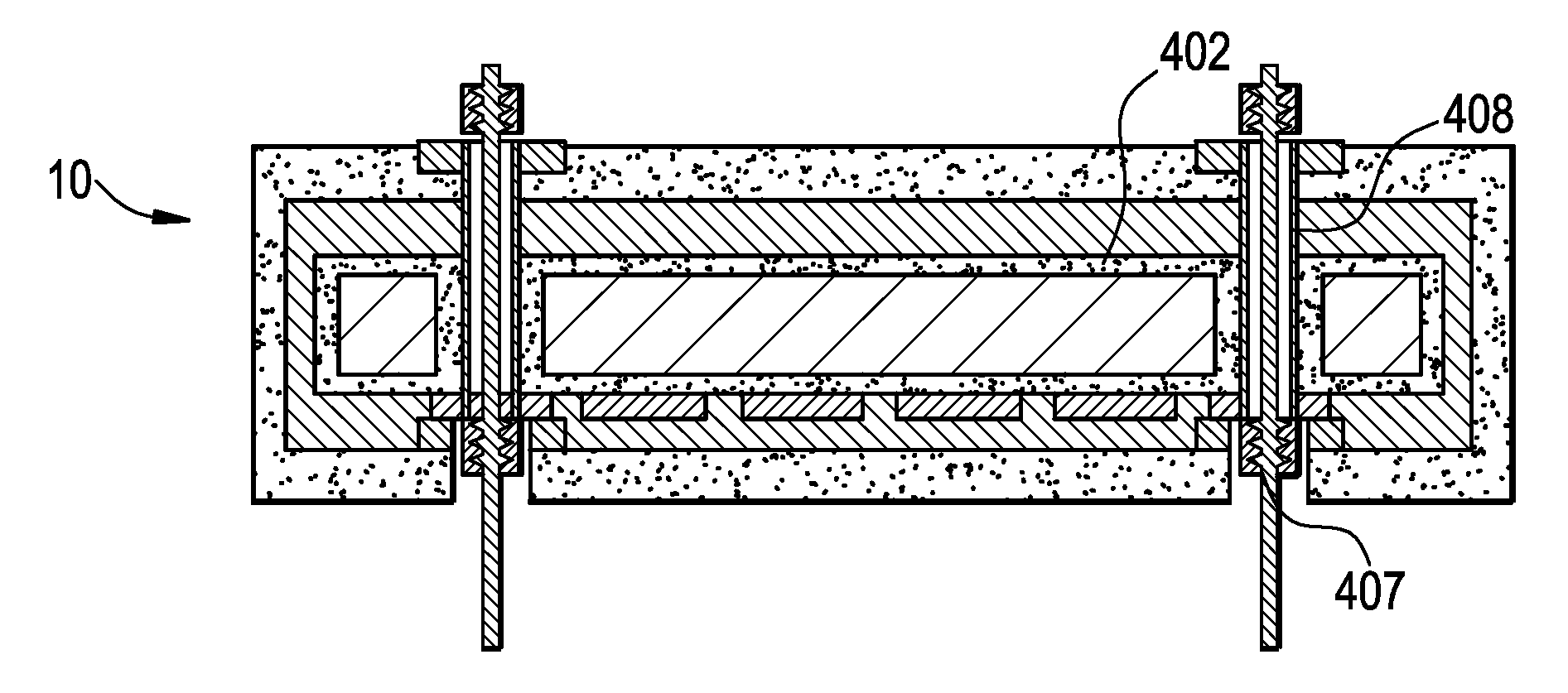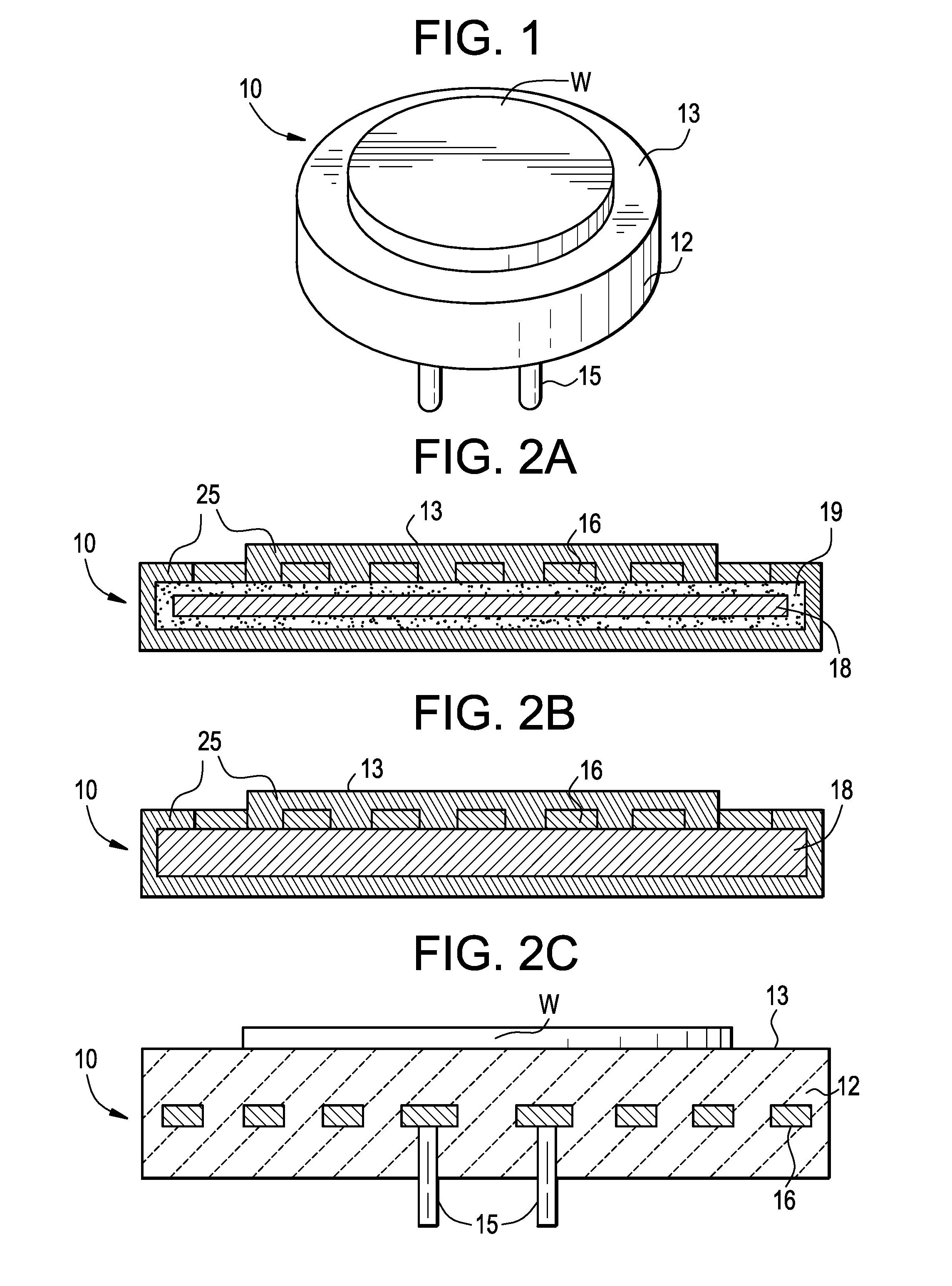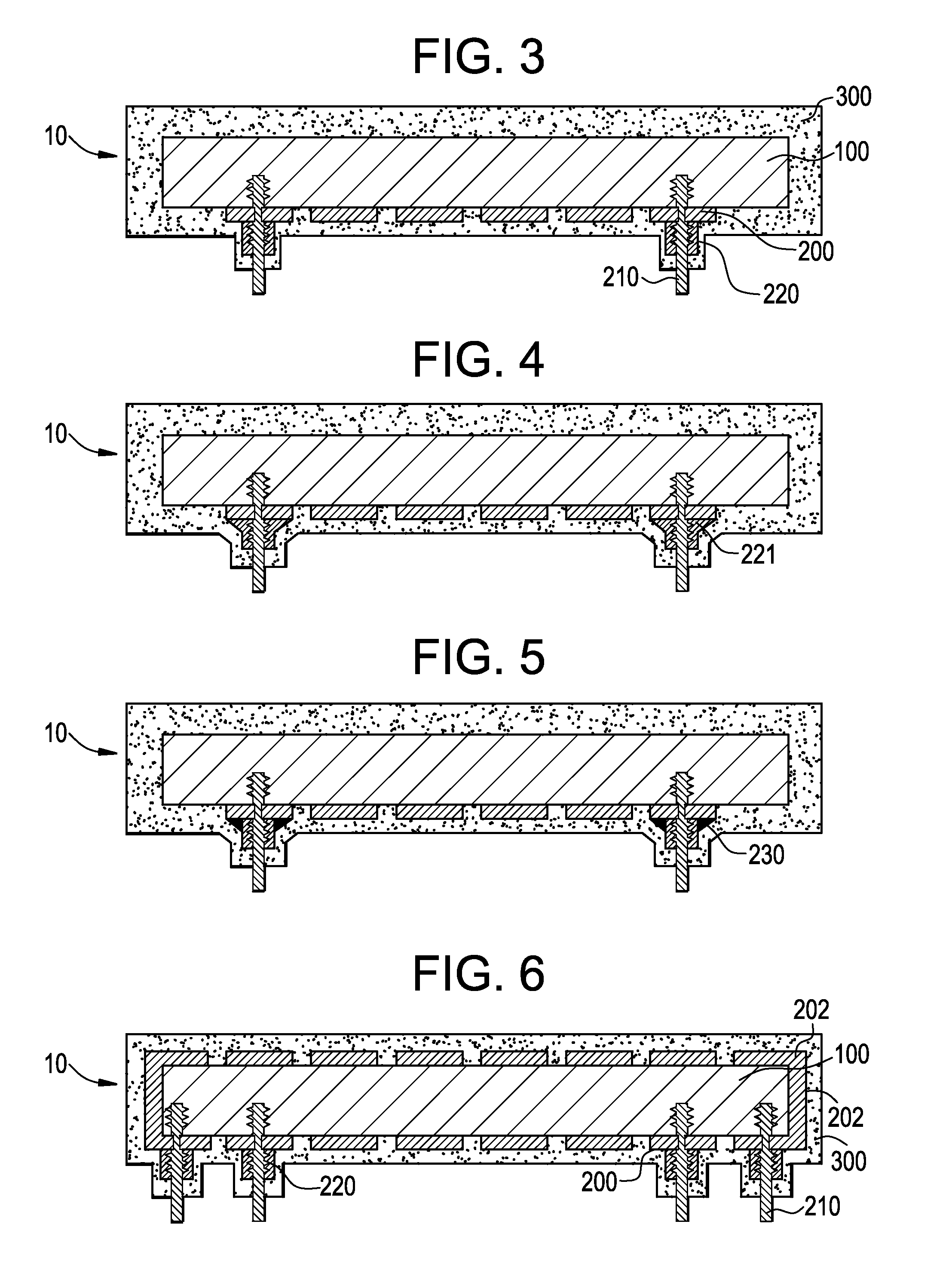Corrosion resistant wafer processing apparatus and method for making thereof
a wafer processing and corrosion resistance technology, applied in the field of wafer processing equipment, can solve the problems of corroding/chemically attacking the reactor components, the presence of problems in subsequent deposition, and the presence of spurious deposition on other exposed surfaces inside the reactor, and achieve the effect of high thermal stability
- Summary
- Abstract
- Description
- Claims
- Application Information
AI Technical Summary
Benefits of technology
Problems solved by technology
Method used
Image
Examples
example 1
[0107]In the example, a glass was prepared from a homogeneous powder mixture from reagent grade raw materials in the amount of 45 wt % yttrium oxide, 20 wt % aluminum oxide, and 35 wt % silicon dioxide. The powder mixture was melted in a platinum crucible at 1400° C. for 1 hr. The glass melt was poured into a steel mold and annealed from 680° C. to room temperature in 12 h. Each glass was crushed and milled in propanol using a mill with Al2O3 elements, forming a glass grit composition having an average particle size of 100 μm.
[0108]In the next step, the glass grit was added to a colloidal alumina solution in an amount of 75 wt. % glass grit and 25 wt. % colloidal alumina, forming a glass-ceramic adhesive paint / adhesive. The colloidal alumina solution is commercially available as Nyacol® AL20DW from Nycaol Nano Technologies, containing 20-25 wt. Al2O3, 1000° C. to form an etch resistant layer protecting the underlying components. The high temperature allows the paste to form a seal o...
example 2
[0109]An electrically conductive heating element (molybdenum manganese) was deposited onto a ceramic substrate (AlN). The substrate contained through-holes to allow for installation of electrical contacts. In the next step, Ni-plated molybdenum posts were installed using molybdenum fasteners. The adhesive of Example 1 was painted around the contact points between the Ni-plated molybdenum posts, the molybdenum fasteners, heating element on the AlN substrate, and the AlN substrate. Next, the entire heater assembly including the contact was coated with AlN through a CVD process.
[0110]In a test simulating conditions of a heater with AlN substrate in a semiconductor processing environment, corrosion testing of the heater and contact was conducted after 100 thermal cycles between 400 and 500° C. at a ramp rate of 45° C. / min. In another test, a heater with graphite core was cycled 100 times between 400 and 600° C. with a ramp rate of 60° C. / min. The tests were to determine whether the gla...
example 3
[0113]A filler composition comprising a powder mixture from reagent grade raw materials in the amount of 45 wt % yttrium oxide, 20 wt % aluminum oxide, 35 wt % silicon dioxide was compared with other materials known in the art, including alumina, molybdenum, TaC, AlN, graphite, and nickel. In the test, a) dimensions and mass of the sample was measured prior to testing; b) parts were placed in a vacuum chamber, which is then pumped down to a pressure of approximately 1 millitorr; c) the parts were heated to the desired testing temperature; d) a fluorine / argon plasma was generated above parts for the desired time period; e) after testing, the parts were removed from the chamber and the mass after exposure was recorded. The corrosion rate is calculated as follows:
corrosion rate=mass loss / density / exposed surface area / time;
wherein a negative corrosion rates indicate mass gain after exposure, which translates to excellent corrosion resistance.
[0114]The results of the experiments comparing...
PUM
| Property | Measurement | Unit |
|---|---|---|
| temperature | aaaaa | aaaaa |
| elongation | aaaaa | aaaaa |
| thickness | aaaaa | aaaaa |
Abstract
Description
Claims
Application Information
 Login to View More
Login to View More - R&D
- Intellectual Property
- Life Sciences
- Materials
- Tech Scout
- Unparalleled Data Quality
- Higher Quality Content
- 60% Fewer Hallucinations
Browse by: Latest US Patents, China's latest patents, Technical Efficacy Thesaurus, Application Domain, Technology Topic, Popular Technical Reports.
© 2025 PatSnap. All rights reserved.Legal|Privacy policy|Modern Slavery Act Transparency Statement|Sitemap|About US| Contact US: help@patsnap.com



